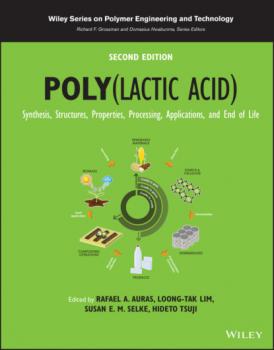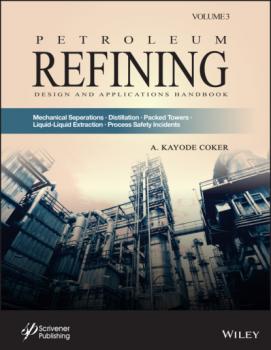ТОП просматриваемых книг сайта:
John Wiley & Sons Limited
Все книги издательства John Wiley & Sons LimitedАннотация
The second edition of a key reference, fully updated to reflect new research and applications Poly(lactic acid) – PLA, biodegradable polymers derived from lactic acid, have become vital components of a sustainable society. Eco-friendly PLA polymers are used in numerous industrial applications ranging from packaging applications to medical implants and to wastewater treatment. The global PLA market is predicted to expand significantly over the next decade due to increasing demand for compostable and recyclable materials produced from renewable resources. Poly(lactic acid) Synthesis, Structures, Properties, Processing, Applications, and End of Life provides comprehensive coverage of the basic chemistry, production, and industrial use of PLA. Contributions from an international panel of experts review specific processing methods, characterization techniques, and various applications in biomedicine, textiles, packaging, and environmental engineering. Now in its second edition, this fully up-to-date volume features new and revised chapters on 3D printing, the mechanical and chemical recycling of PLA, PLA stereocomplex crystals, PLA composites, the environmental footprint of PLA, and more. Highlights the biodegradability, recycling, and sustainability benefits of PLA Describes processing and conversion technologies for PLA, such as injection molding, extrusion, blending, and thermoforming Covers various aspects of lactic acid/lactide monomers, including physicochemical properties and production Examines different condensation reactions and modification strategies for enhanced polymerization of PLA Discusses the thermal, rheological, and mechanical properties of PLA Addresses degradation and environmental issues of PLA, including photodegradation, radiolysis, hydrolytic degradation, biodegradation and life cycle assessment Poly(lactic acid) Synthesis, Structures, Properties, Processing, Applications, and End of Life, Second Edition remains essential reading for polymer engineers, materials scientists, polymer chemists, chemical engineers, industry professionals using PLA, and scientists and advanced students engineers interested in biodegradable plastics.
Аннотация
Аннотация
Аннотация
Аннотация
A thought-provoking and startlingly insightful reworking of the science of prediction In Prediction Revisited: The Importance of Observation , a team of renowned experts in the field of data-driven investing delivers a ground-breaking reassessment of the delicate science of prediction for anyone who relies on data to contemplate the future. The book reveals why standard approaches to prediction based on classical statistics fail to address the complexities of social dynamics, and it provides an alternative method based on the intuitive notion of relevance. The authors describe, both conceptually and with mathematical precision, how relevance plays a central role in forming predictions from observed experience. Moreover, they propose a new and more nuanced measure of a prediction’s reliability. Prediction Revisited also offers: Clarifications of commonly accepted but less commonly understood notions of statistics Insight into the efficacy of traditional prediction models in a variety of fields Colorful biographical sketches of some of the key prediction scientists throughout history Mutually supporting conceptual and mathematical descriptions of the key insights and methods discussed within With its strikingly fresh perspective grounded in scientific rigor, Prediction Revisited is sure to earn its place as an indispensable resource for data scientists, researchers, investors, and anyone else who aspires to predict the future from the data-driven lessons of the past.










